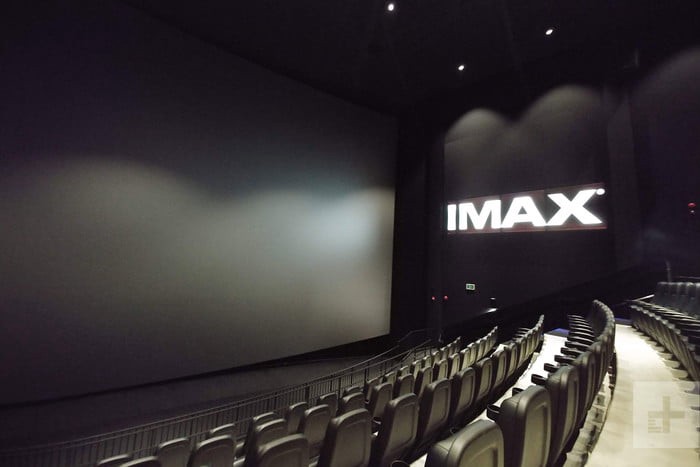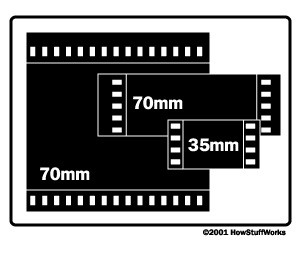 Source: IMAX
Source: IMAX
?i-What??. I had totally no clue of what IMAX was. All I knew was it sounded an awful lot like the latest robotic vacuum cleaner launched by a dodgy company, and my local cinema wanted me to pay more for it. Being a generous movie-goer that I am, cough*, I waved those extra dollars from my pocket goodbye as I opted for the supposedly-better cinema experience that I was so obsessed about. If you?re unfamiliar with what IMAX is and are equally curious to know more, then, have a seat.
I remembered that the first time I got into the an IMAX theater, I was watching some random film which was not shot in IMAX. The movie itself was not memorable, hence I forgot which one, but then, the cinema hall was a different story together.
 Source: Digitaltrends
Source: Digitaltrends
The greatest takeaway was the seating arrangement
I remember clearly that as I was searching for my seats in the usually dark cinema hall, something strange caught my attention. The step-down between the rear and the front seats are unusually steep, that feels more at home in a stadium than a cinema hall. To add to that sensation of awkwardness, as I entered the hall from the far right, my peripheral vision caught what looked like a distortion of angle from the seats located at the furthest left of the hall. Yes, the seats are angled towards me, which makes the seat rows a mild semi-circle, combined.
Then, there?s that gigantic screen
?At this rate..,? I said to myself, ?I?ll be looking at my knees to glimpse at the screen, perhaps.? I was clearly berating the peculiar seating arrangement. Then came the screen. Something was amiss. The aspect ratio was certainly off, as it looked a lot square-er (is there such a word?) than regular theater screens. Which also meant that the overall screen size was noticeably bigger and takes up more of your vision.
 Source: IMAX
Source: IMAX
Having been through a couple of films in IMAX, I can vouch that there?s one thing that truly stands out in IMAX theaters: immersion. If you select a middle seat and watch something fully shot in IMAX (not IMAX optimized, be careful with this one) like Nolan?s Dunkirk and Avengers: Infinity War, you?ll notice that your head will move instead of your eyes to focus-hunt on certain objects on-screen, especially the ones closer to the screen edge. That said, if you truly concentrate your sight on the character depicted at the center of the screen, a huge chunk of the outer edge will fall under your peripheral vision. This comes in both good and bad points.
The bad one is of course, if you?re a perfectionist and want to ?see everything? in the film, you?ll end up giving your neck an incredible workout that your neck obviously won?t thank you for. The good? That combination of seating arrangement that draws you closer to the screen, working in tandem with that gigantic screen size, makes you feel that you?re at the center of the movie instead of stalking it from far away.
The film format (for the geeks)
Curiosity kicked in hard after my initial foray into an IMAX theater, so I decided to dig a little deeper into this IMAX thing. Suffice to say that become a theater expert I did not, but one thing that amazed me, was the film format for IMAX.
 Source: HowStuffWorks
Source: HowStuffWorks
Standard film size comes at 35mm, and sometimes a bigger 70mm film format is used. As you can see from the illustration above, generally, the film format for IMAX is also referred to as 70mm, but the real estate of an IMAX film is telling a different story altogether. This is precisely due to one reason alone; the IMAX film is moving in a different direction during projection. Normal 35mm and 70mm films move vertically. Noticed those perforations on the left and right side of those films? Those are ?holes? for projector ?claws? to grab and pull-down the film as the movie transitions from frame to frame.
Now, if you versus that with the IMAX film, you?ll notice that the perforations run on top and below the film. Yes, instead of 70mm wide, the film is now 70 milimeters high and 15 perforations wide, and specifically referred to as 15/70mm format. And instead of moving top-down, the IMAX film runs horizontally during projection.
But, wait a minute, aren?t all modern cinemas using digital projection nowadays?
Yes, that is obviously true. It?s such a shame that neither you nor I can possibly experience the ?raw? IMAX projection anymore, which was claimed to have an impressive resolution of 12 thousand horizontal lines (12K). But even then, the modern IMAX digital projectors are still a technology to behold.
 IMAX 4K laser projectors. Source: IMAX
IMAX 4K laser projectors. Source: IMAX
As of the time of writing this, IMAX has adopted to a dual projector system, either featuring dual-2K or dual-4K-laser projectors. These dual projector setup enabled IMAX theaters to superimpose the output of both projectors onto each other, with half a pixel offset. The result is a (claimed) higher perception of overall resolution, and even better contrast.
Improved sound quality, and everything else
Perhaps the only grey area with IMAX is the audio department, which, according to IMAX?s official site, is a mix of ?perfectly tuned sound system? and ?precise speaker orientation? which leaves no bad audio spot within the cinema hall, including those who are far away from the speakers. I assume that they are referring to those who prefer to seat at the back rows of the theater. Yes, I?m looking at you, romantic couples.
From my limited personal experience, hopping from seat to seat in an IMAX theater to test the sound quality in each seat is quite a surefire way to be escorted out by the security. To be fair, in Dunkirk, the sounds were quite majestic. Oh man, whenever a gun fires, especially when the bullet pierces through sheets of metal, I have only two words for it; deafening and crisp. But in some movies like Thor: Ragnarok, there?s no discernible improvement over the likes of a Dolby Atmos hall. Simply put, if you are hoping that IMAX will bring you cutting edge audio that is leaps and bounds ahead of other already established systems like Atmos, you?re bound to be disappointed.
Here comes a funny question, is IMAX for you?
If you insist that every other movie that is screened in an IMAX hall should be watched in IMAX, I suspect that your bank account will hate you for that. Of course, granted that you have an unlimited budget for each of your movie-day-outs, this should be fine, but I opine that you should skip those ?optimized for IMAX? movies and watch them in regular halls instead. Reserve your splurge on IMAX tickets only for movies which are truly shot (mostly) with the IMAX film format, like Nolan?s flicks, and Avengers: Infinity War and Endgame. Even then, if, for some unknown reasons, you still feel that you?re not getting your bang for buck with your IMAX tickets, consider this:
 Behind the scenes of Interstellar. Source: Hoyte van Hoytema
Behind the scenes of Interstellar. Source: Hoyte van Hoytema Nolan and his crew behind the scenes of Dunkirk. Source: Hoyte van Hoytema
Nolan and his crew behind the scenes of Dunkirk. Source: Hoyte van Hoytema
Simply take look at those monstrous cameras needed to produce the movie. Feeling a lot better, right?
*This article was originally published on The Film Addict


